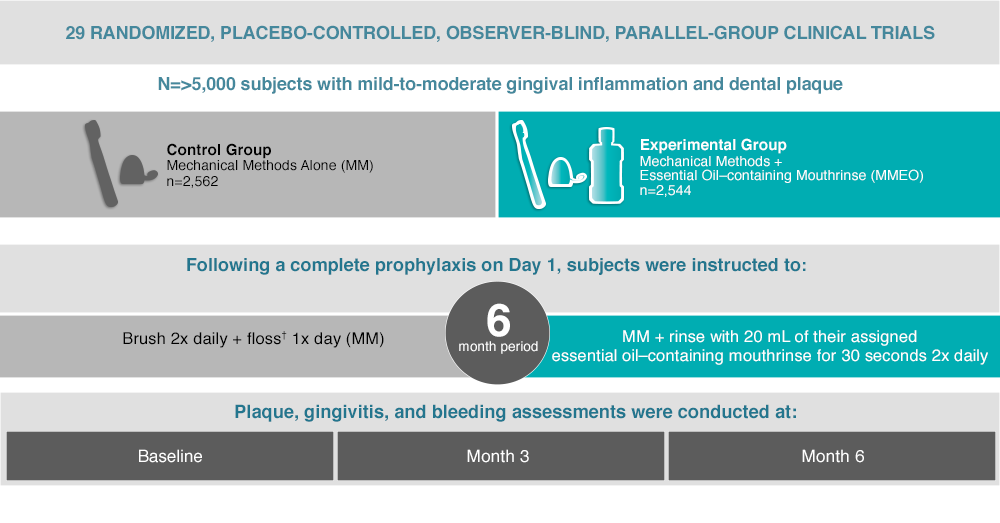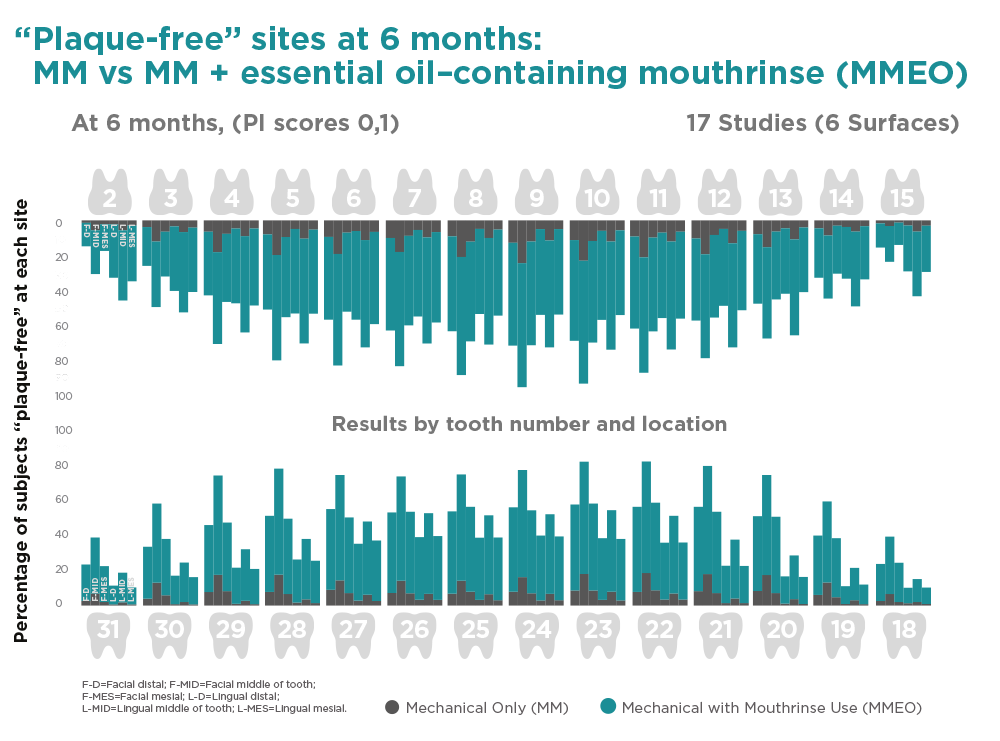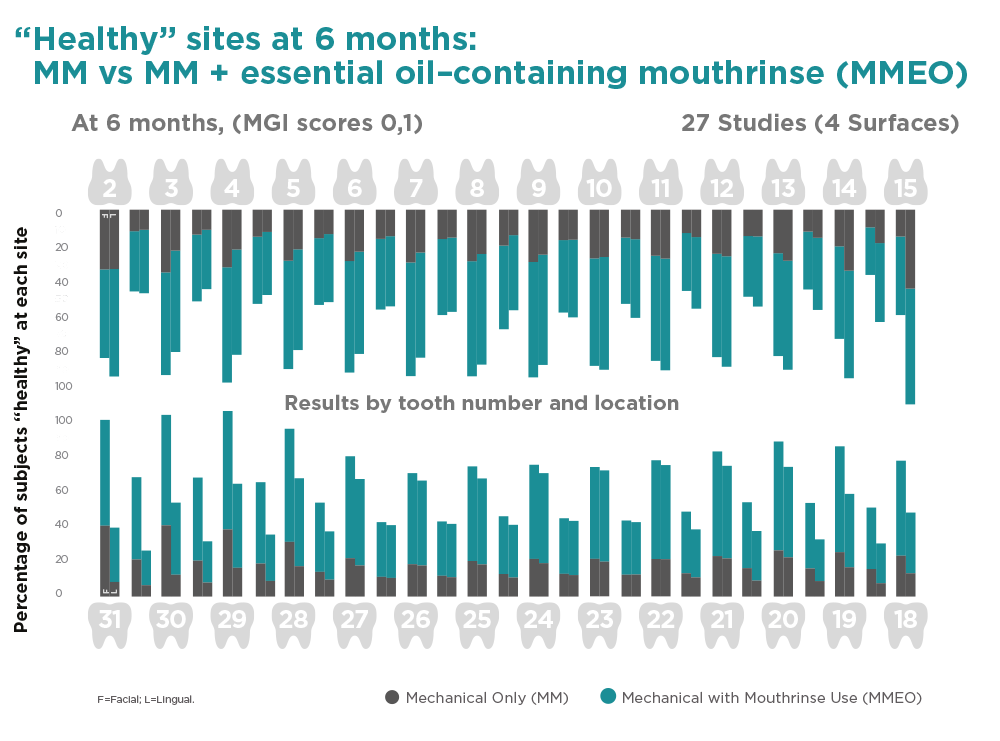Essential Oil Mouthwash Effect on Gingivitis and Plaque
Objective
Compare the efficacy of combined mechanical oral hygiene and use of essential oil-containing mouthrinses (MMEO) with that of a negative control of mechanical method only of oral hygiene (MM) based on the percentage of healthy gingival sites identified at 6 months.
Methodology
Meta-analysis evaluated data from 29 long-term, randomized, placebo-controlled, observer-blind, parallel-group clinical trials of ≥6 months’ duration investigating antigingivitis and antiplaque effects of essential oil (EO)-containing mouthrinses.
>5,000 healthy subjects with mild-to-moderate gingival inflammation and dental plaque
Trials conducted across 3 countries from 1980 to 2012
Evaluation included individual, site-specific data measured from >500,000 tooth site

Results
Essential Oil Mouthwash Efficacy results
MMEO patients had significantly higher odds of having a cleaner, healthier mouth. Based on odds ratios‡ calculated from this meta-analysis:
MMEO patients achieved a greater than 7x higher odds for “plaque-free” sites when compared with MM patients
MMEO patients also achieved 5x higher odds for “healthy” sites when compared with MM patients
Plaque results
A greater percentage of subjects achieved “plaque-free” sites with MMEO vs MM.

Percentage of responders with 50% “plaque-free” sites:
At 3 months—MMEO 21% vs MM 4%
At 6 months—MMEO 37% vs MM 5.5%
Gingivitis results
A greater percentage of subjects achieved “healthy” sites with MMEO vs MM.

Percentage of responders with 50% “healthy” sites:
At 3 months—MMEO 19.1% vs MM 10.3%
At 6 months—MMEO 44.8% vs MM 14.4%
Conclusion
By determining the percentage of plaque-free tooth surfaces and gingival sites that achieved health—which are the goals of preventive services—these long-term clinical trials demonstrate the clinically relevant benefit of daily use of essential oil-containing mouthrinses for plaque and gingivitis reduction beyond mechanical method alone in oral hygiene.
Daily rinsing with an essential oil-containing mouthrinse as adjunctive use with a mechanical oral hygiene provided significantly higher odds of having a cleaner and healthier mouth, which may lead to prevention of disease progression.
*LISTERINE® Antiseptic is not indicated for use in the treatment of xerostomia.
†In only 2 studies, daily flossing was required in a mechanical regimen. In all others, use of an interdental cleaning device was allowed to continue if it had been part of the subject’s usual oral care regimen.
‡Odds ratios measure how strongly an “event,” or variable, is associated with an “outcome.” An odds ratio =1 indicates exposure to a variable and does not affect the odds of an outcome. An odds ratio >1 indicates exposure is associated with higher odds of an outcome occurring. An odds ratio <1 indicates exposure is associated with lower odds of an outcome occurring. In the meta-analysis, the event, or variable, was the addition of EO mouthrinse to a mechanical routine twice a day for 6 months. The outcome was the achievement of “healthy” gingival sites or “plaque-free” sites. In this meta-analysis, the higher the odds ratio, the more likely a subject using EO mouthrinse was to have “healthy” and/or “plaque-free” sites, compared with mechanical methods alone.
Reference:
1. Araujo M, Charles C, Weinstein R, Parikh-Das AM, Zhang J, Gunsolley JC. Meta-analysis of the effect of an essential oil-containing mouthrinse on gingivitis and plaque. J Am Dent Assoc. 2015;146(8):610-622 and/or post hoc analyses of data.
